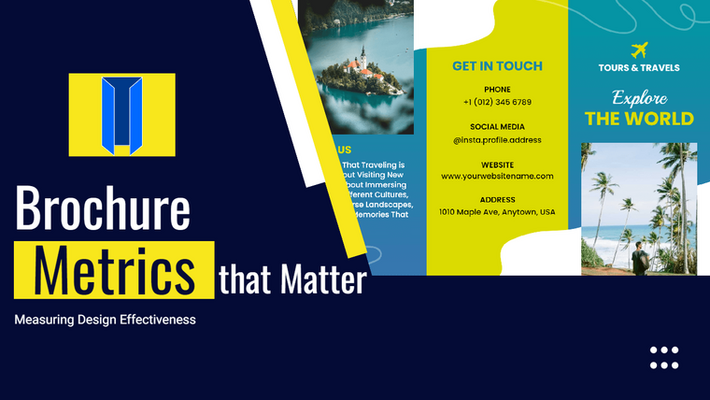- 1-905-452-8193
- Contact Us
- Member Login
- Get Listed Today
- 220,911 members

Effective brochure design goes beyond aesthetics; it's about delivering a message that resonates and prompts action. In this comprehensive guide, we'll explore the key metrics that matter when evaluating the effectiveness of your brochure design. Whether you're a student working on a project or a business owner seeking to enhance marketing materials, understanding these metrics is essential for creating impactful brochures. To seamlessly incorporate these metrics into your design process, consider leveraging a readymade customizable online brochure. These templates not only expedite your design workflow but also provide a structured foundation for integrating key metrics seamlessly.
Measuring the success of your brochure design goes beyond personal preferences; it involves assessing how well your design achieves its intended goals. Metrics provide quantifiable data that helps in refining and optimizing your approach.
Regularly analyzing brochure metrics allows for continuous improvement. By identifying what works and what doesn't, you can adapt your design strategies to better meet the needs and preferences of your audience.
Brochures serve as powerful communication tools, and their design plays a crucial role in conveying messages. To assess the impact of your efforts, it's important to focus on measurable metrics that provide insights into the effectiveness of your brochure design.
Understanding how much time readers spend engaging with your brochure provides insights into the level of interest. Longer dwell times suggest that your design is capturing attention and encouraging exploration.
Tracking interactive elements, such as clickable links or QR code scans, helps gauge the audience's engagement. Higher interaction rates indicate an effective integration of design elements.
If your brochure includes clickable images, monitoring the click-through rates provides valuable data on the visual elements that resonate with your audience. This metric aids in refining image choices for future designs.
Assessing the impact of colors on reader emotions and actions is crucial. Track how color choices align with your brand and elicit the desired responses from your audience.
Utilize readability tools to assess the ease with which your audience comprehends the content. Maintaining a balance between informative and easily digestible content is vital for effective communication.
Measure how well your audience retains key messages from your brochure. This metric provides insights into the clarity and effectiveness of your content.
Incorporate surveys or feedback forms in your brochure to directly gather insights from your audience. Pose questions related to design elements, content clarity, and overall user experience.
Monitor social media platforms for mentions, shares, and comments related to your brochure. Analyzing sentiment provides qualitative data on how your audience perceives your design.
Evaluate the effectiveness of your CTAs by tracking click-through rates. This metric directly measures how well your design prompts readers to take desired actions.
For brochures with specific conversion goals, such as product purchases or event registrations, monitoring conversion rates is essential. This metric reflects the ultimate success of your design in driving actions.
For printed brochures, track distribution metrics, such as the number of copies distributed and locations reached. In the digital realm, analyze download and view counts.
Understand your audience better by collecting demographic data through surveys or analytics tools. This information helps in tailoring future designs to specific audience preferences.
Utilize heatmap tools to visually analyze user interactions with your digital brochure. Analytics tools provide detailed quantitative data on various metrics, aiding in a comprehensive assessment.
Experiment with A/B testing to compare different design elements or layouts. This iterative approach helps identify the most effective design choices based on measurable outcomes.
You Might Like: Key Principles for Effective and Engaging Flyer Layout
In the realm of brochure design, metrics play a pivotal role in shaping strategies and ensuring continual improvement. By using the e-brochure app and focusing on engagement, visual impact, content effectiveness, audience feedback, calls-to-action, distribution, and leveraging technology, you can holistically evaluate the success of your brochure design in minutes effortlessly. Regular analysis of these metrics allows for adaptation, refinement, and the creation of designs that truly resonate with your audience. So, embrace the data-driven approach, incorporate relevant insights, and let your brochure design evolve into a powerful communication tool. Happy designing!
